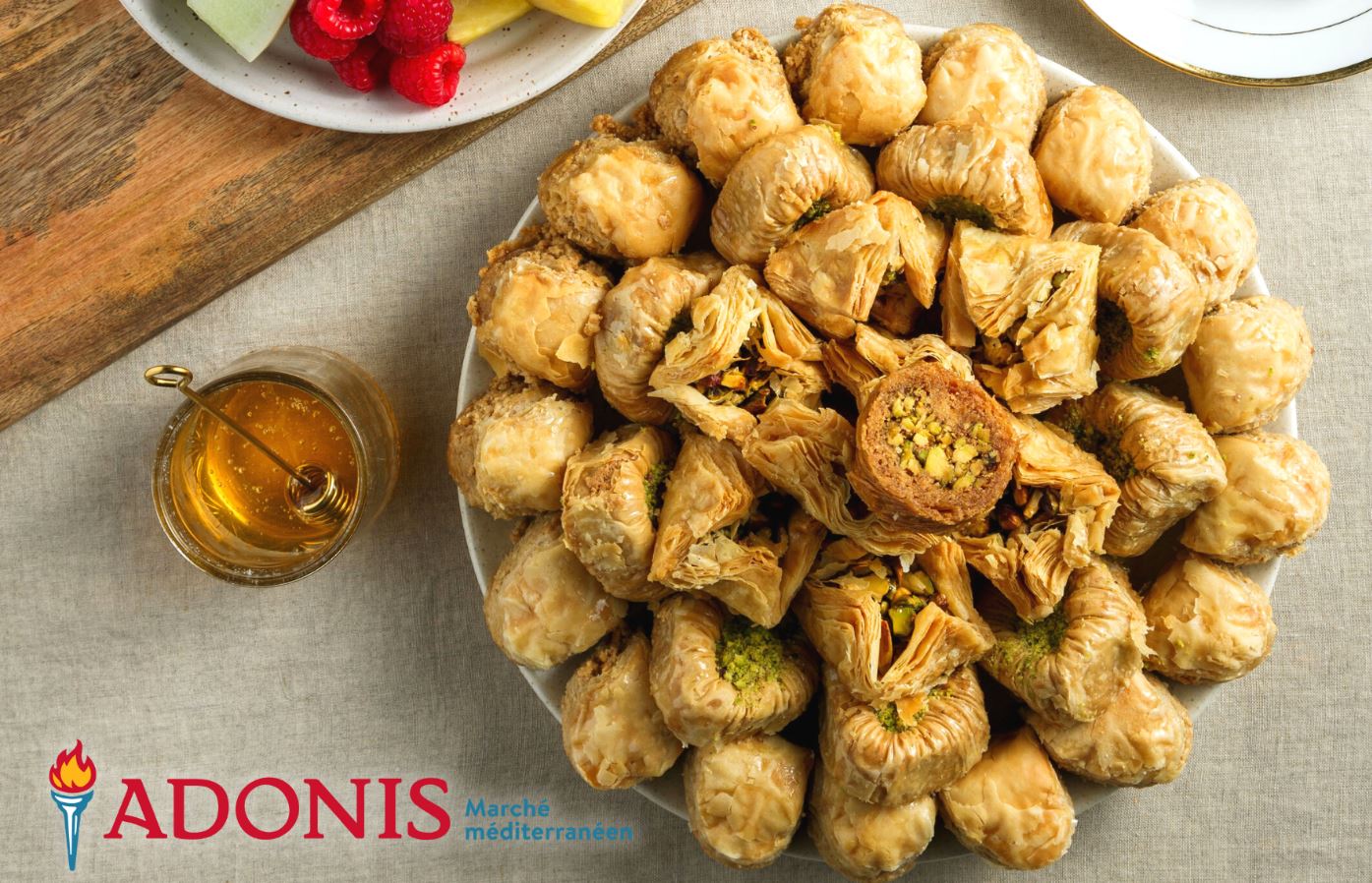Delicious Baklava
An iconic Middle Eastern delight, baklava is the perfect way to end a Mediterranean-inspired meal. Want to know more about baklava and its endless variations? Read this article to discover the secrets of this sweet treat rich in tradition and history.
The Origins of Baklava
The first baklava was made as far back as the 8th century, when the custom of making a pastry consisting of layers of unleavened dough, sugar and nuts was established. While the official origin of baklava remains disputed by historians, it is generally traced back to Turkey and other countries of the Ottoman Empire. The dessert eventually crossed borders, reaching as far as Greece.
Baklava is also associated with certain religious customs. For example, the typical Greek baklava traditionally contains 33 layers of phyllo dough, in reference to the age of Christ at the time of his death. Moreover, baklava is often eaten during religious holidays, such as Ramadan or Christmas.
What’s a Baklava?
Baklava is a popular dessert in Middle Eastern countries such as Turkey and Greece. Its ingredients vary from one region to the next, but there are a few similarities nonetheless. Traditional baklava contains phyllo dough, which gives it its iconic flaky texture, as well as sugar and nuts. As for the rest, there are a multitude of variations to the recipe, depending on the spices or nuts used for the filling, or the shape given to the baklava itself.
Different Types of Baklava
Here's a small selection of the different types of baklavas you can find. Of course, this is far from a complete list, as there are a multitude of other flavours, each more delicious than the next!
- Pistachio Baklava This is the most common baklava. Made with pistachios—a nut growing profusely in the Mediterranean region—it is usually cut in squares or diamonds.
- Chocolate Baklava There are many ways to prepare chocolate baklava. You can simply add a chocolate-hazelnut spread to the filling, or add chopped chocolate directly to the nut mixture. You can even infuse the glaze with orange to enhance the dessert's flavour even more. Whatever you do, the result is sure to be scrumptious!
- Havuç Dilim Baklava This baklava differs from the others mainly in its presentation. Instead of being cut into squares or diamonds, it is shaped into large triangles, reminiscent of a carrot. This results in bigger portions, with buttery rather than sweet notes.
- Söbiyet Unlike other types of baklavas, the Söbiyet is prepared with cream. Its name apparently means "to eat, to be satiated" in Arabic, which gives us a good indication of its consistency. Because it contains dairy products, it can’t be kept as long as traditional baklava.
- Vişneli Baklava The Vişneli, on the other hand, contains a nut-free filling made with sour cherries. Lemon and poppy seeds are often added as a garnish, offering a lovely, tangy sweetness.
Homemade Baklava
Of course, it is possible to make your own baklava at home. Although it may seem rather intimidating at first glance, once you get going, you will see that it's not actually that complicated. Just take your time! Whether you're into traditional baklava or want to explore more unique flavours (like this pumpkin baklava ), there's sure to be the perfect recipe for you!
If you’re not feeling like cooking, you can always order a delicious assortment of ready-to-eat baklava for your receptions from our catering website You can also visit our stores to choose from our many, many sweet treats!

